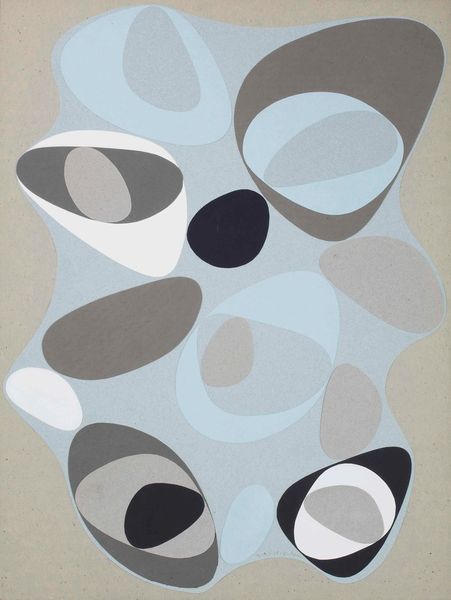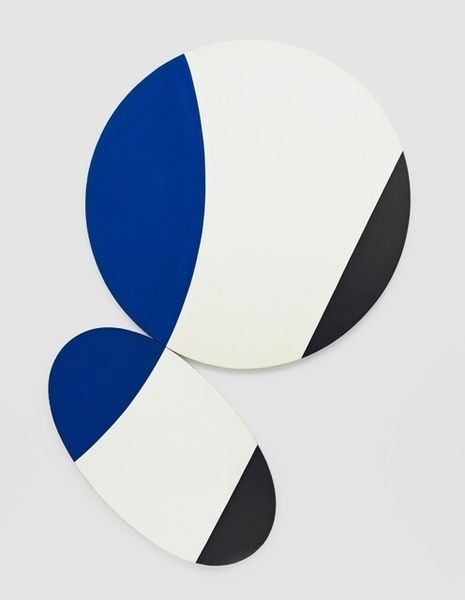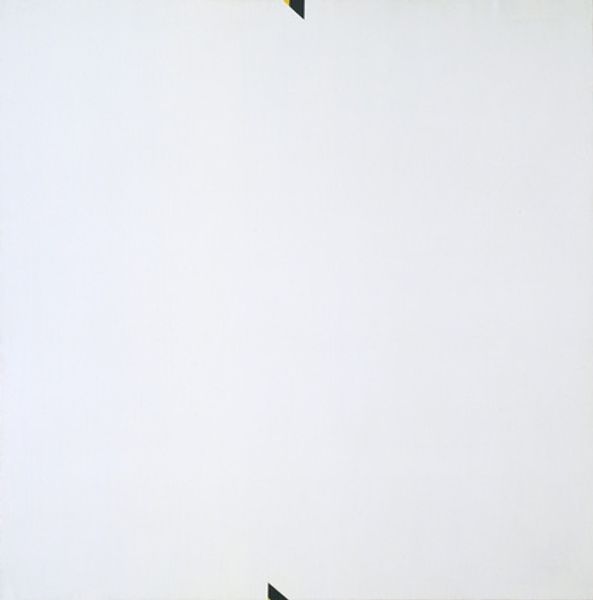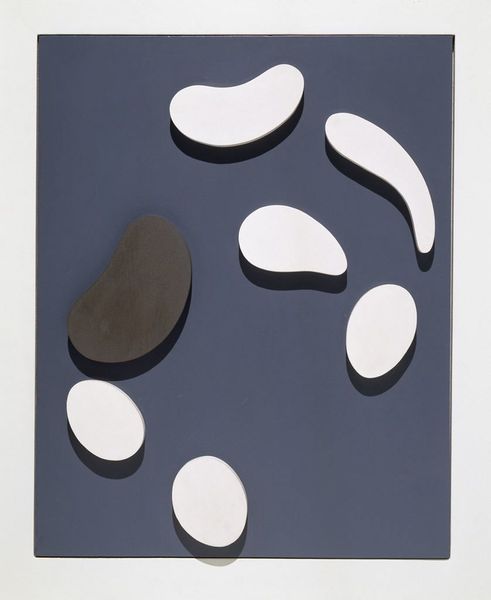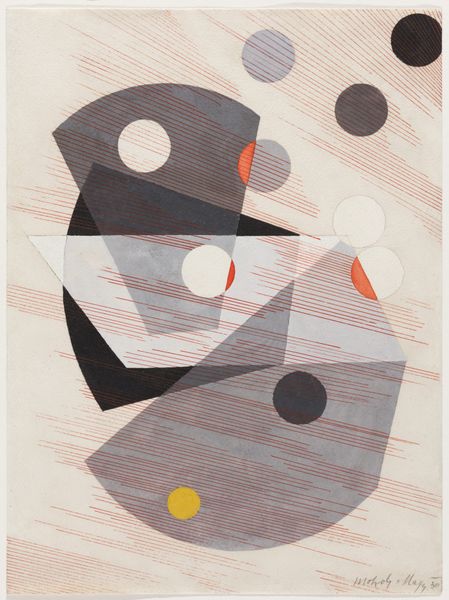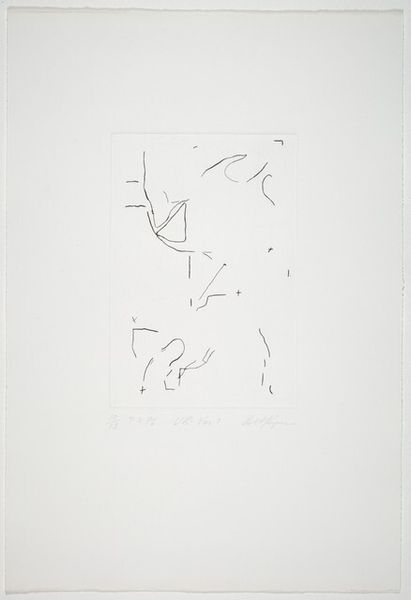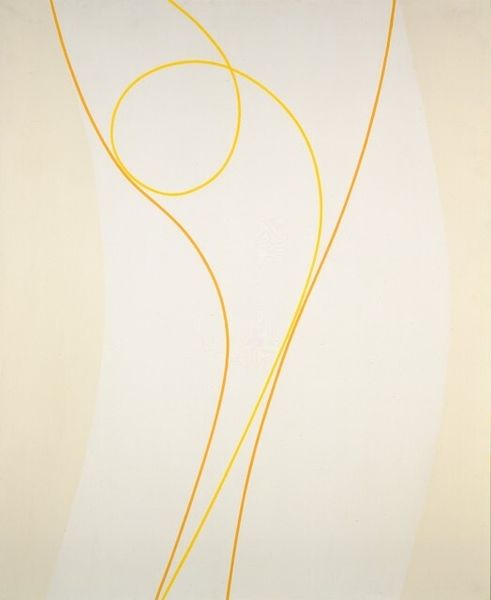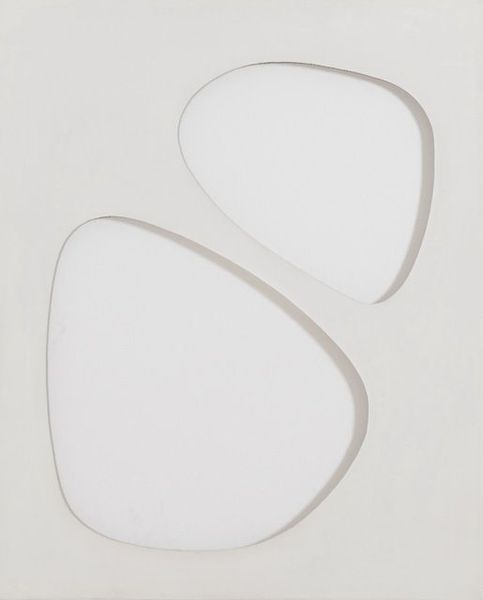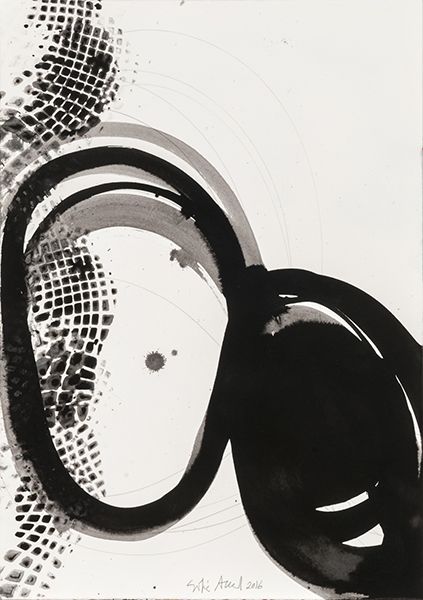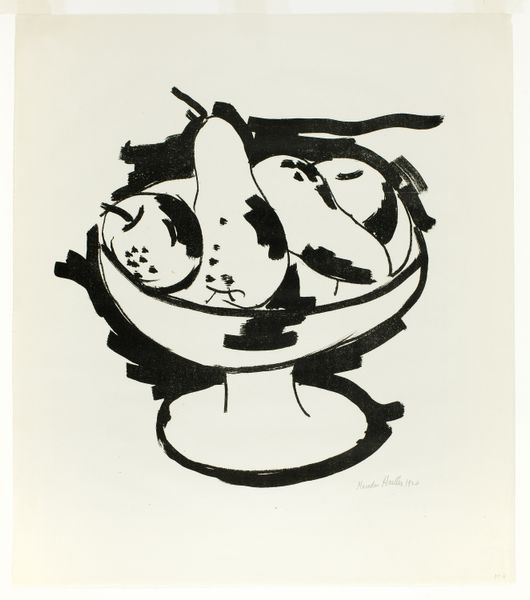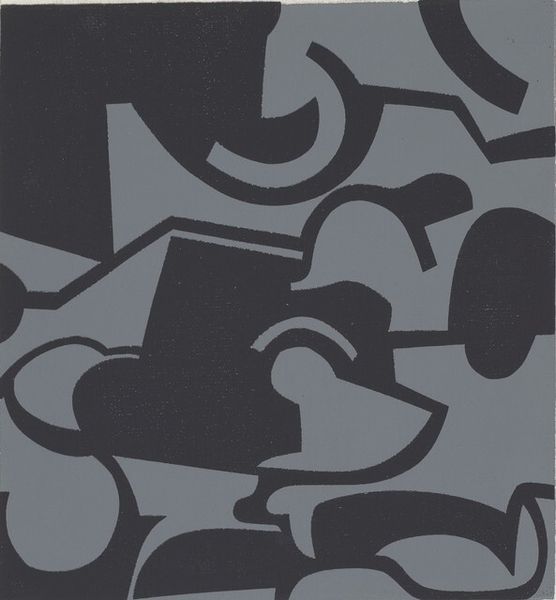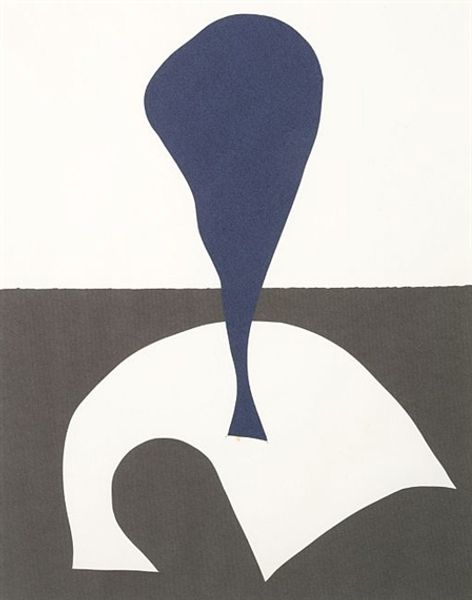
acrylic-paint
#
op-art
#
minimalism
#
op art
#
acrylic-paint
#
geometric
#
abstraction
Copyright: Gottfried Honegger,Fair Use
Editor: Here we have Gottfried Honegger's "D-562," an acrylic on canvas created in 1969. At first glance, the repeated circular shapes in black and white are quite mesmerizing. It gives off a very cool, almost clinical, vibe. What do you see in this piece? Curator: I see a careful arrangement of void and form. These stark contrasts speak volumes when we consider the period. The late 60s were rife with social upheaval; Minimalism emerged, in part, as a reaction against the perceived excesses and emotionalism of abstract expressionism. Look closely at the deliberate placement of each dark semi-circle – they aren't random. Do they evoke any particular imagery to you? Editor: I hadn't really thought about it, but now that you mention it, there’s almost a suggestion of eyes peering out. Is that a stretch? Curator: Not at all. Think of the psychological impact. These fragmented circles, this constant interplay of light and shadow…could suggest surveillance or the ever-watchful gaze of societal structures. Remember, symbols shift in meaning depending on cultural context and individual interpretation. This artwork acts as a powerful reminder of the subtle ways in which geometric abstraction can tap into shared anxieties and cultural memories. Editor: That's a completely different way of looking at it. I was stuck on just the aesthetic. Curator: Precisely. Art like this encourages us to look beneath the surface. The beauty is in unpacking those hidden meanings. Editor: This has really changed how I see minimalist works now. Thank you. Curator: My pleasure. It is a fascinating exercise in visual literacy, and I am glad you enjoyed the dive into decoding Honegger's work.
Comments
No comments
Be the first to comment and join the conversation on the ultimate creative platform.


